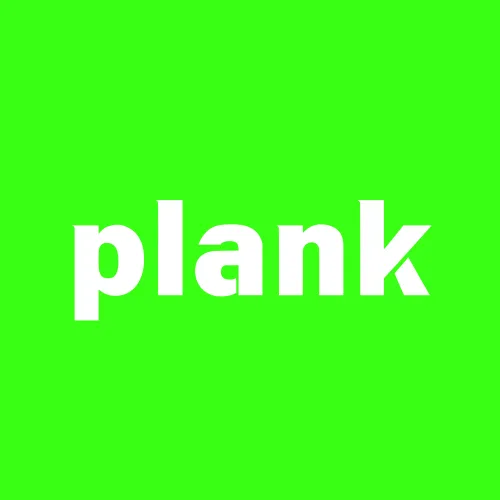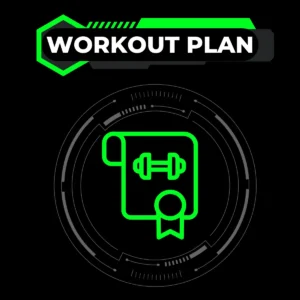The plank exercise is a powerful isometric movement that has become a cornerstone of fitness routines worldwide. Simple yet highly effective, the plank is a bodyweight exercise designed to strengthen the core, improve balance, and enhance overall stability. Its versatility makes it suitable for beginners, seasoned athletes, and everyone in between. By holding a static position, you engage multiple muscle groups simultaneously, which helps develop strength and endurance over time.
Whether you’re looking to improve your posture, boost athletic performance, or simply add variety to your workout routine, mastering the plank exercise is essential. In this comprehensive guide, we’ll explore everything you need to know about the plank, from proper form to variations and common mistakes to avoid.
| Category | Details |
| Target Muscle Group | Core (Rectus Abdominis, Transverse Abdominis) |
| Exercise Type | Strength Training |
| Equipment Needed | Bodyweight (Optional Mat) |
| Force Type | Static Hold |
| Training Level | Beginner to Advanced |
| Supporting Muscles | Shoulders (Deltoids), Lower Back, Glutes |
| Mechanics | Isometric |
Primary Muscle Groups Worked in Plank
This exercise primarily targets the muscles in your core, which are essential for maintaining stability and balance during the movement. These muscles include:
Core Muscles
- Rectus Abdominis: Often referred to as the “six-pack muscles,” this group is responsible for flexing your spine and stabilizing your pelvis.
- Obliques: These muscles on the sides of your abdomen help with rotational movements and side-to-side stability.
- Transverse Abdominis: This deep core muscle acts like a corset, stabilizing the spine and providing foundational strength.
Stabilizing Muscles
- Deltoids (Shoulders): Help support your upper body during the plank.
- Glutes: Engaged to maintain a straight body line and prevent hip sagging.
Secondary Muscle Groups Engaged in Plank
Although the planks are a core-focused exercises, it also engages several secondary muscle groups that play a supporting role:
Shoulders and Arms
The shoulders and triceps work to stabilize your upper body as you hold the planks position, ensuring your arms stay strong and steady.
Lower Back (Erector Spinae)
These muscles run along the spine and are responsible for preventing the back from arching during this exercise. Proper activation of the lower back muscles contributes to a safe and effective hold.
Step-by-Step Instructions
Achieving proper plank form is crucial to maximize its benefits and minimize the risk of injury. Follow these detailed steps:
1. Preparing for the Plank: Proper Setup
- Start by lying face down on a mat or flat surface.
- Place your elbows directly under your shoulders, ensuring your forearms are parallel to each other.
- Keep your legs extended, with your toes tucked under.
2. Execution: Achieving the Perfect Form
- Lift your body off the ground by engaging your core and glutes.
- Maintain a straight line from your head to your heels—avoid letting your hips sag or rise too high.
- Keep your neck neutral, gazing slightly ahead of your hands.
3. Timing and Breathing Techniques
- Beginners should aim to hold this exercise for 20–30 seconds. Gradually increase the duration as your strength improves.
- Focus on deep, steady breaths to maintain stability and prevent tension in the neck and shoulders.
Benefits of the Plank Exercise
Incorporating planks into your workout routine provides a wide array of benefits:
1. Improved Core Strength
Planks are one of the most effective exercises for building core strength. They engage all layers of abdominal muscles, helping to stabilize the spine and pelvis.
2. Enhanced Posture and Spinal Stability
By strengthening the muscles around your spine, this exercise promote better posture and reduce the risk of back pain caused by poor alignment.
3. Boosted Athletic Performance
A strong core improves your performance in sports and other physical activities by enhancing balance, agility, and overall strength.
4. Increased Flexibility and Balance
This exercise gently stretch muscles like the shoulders, hamstrings, and even your feet, improving flexibility and balance over time.
Variations of the Plank
To keep your routine interesting and challenging, try these plank variations:
1. Side Plank
Focuses on the obliques and improves lateral stability. Great for those looking to build rotational strength.
2. Forearm Plank
Places greater emphasis on the core, especially the transverse abdominis.
3. Reverse Plank
Targets the posterior chain, including the lower back, glutes, and hamstrings.
4. Dynamic Planks
Incorporate movement with variations like plank to push-up, plank jacks, or mountain climbers for added intensity.
Common Mistakes to Avoid
1. Sagging Hips or Lower Back
Allowing your hips to drop places undue pressure on your lower back and reduces the effectiveness of the exercise.
2. Improper Hand or Elbow Placement
Hands or elbows that are too far forward can strain the shoulders and compromise your alignment.
3. Holding the Position for Too Long
Quality trumps quantity. Holding a plank for an extended period with poor form can lead to injuries.
Safety and Precautions
1. Warm-Up Tips
Perform a light warm-up, such as dynamic stretches, to prepare your body for the exercise.
2. Listening to Your Body
Stop if you feel pain or discomfort. Beginners should start with shorter hold times and build endurance gradually.
3. Proper Alignment to Prevent Injuries
Focus on maintaining a straight line from your head to your heels. Check your form in a mirror if needed.
Equipment Needed For Plank Exercise
The plank is a bodyweight exercise, but a few tools can enhance your comfort and performance:
- Yoga Mat: Protects your elbows and knees.
- Sliders: Add dynamic movement for an advanced challenge.
- Resistance Bands: Increase intensity by adding resistance to your holds.
Alternative Exercises to Replace Plank
If planks aren’t suitable for you, try these effective alternatives:
1. Sit-Ups
Sit-ups are a classic core-strengthening exercise that primarily targets the rectus abdominis. To perform sit-ups, lie on your back with your knees bent and feet flat on the floor. Place your hands behind your head or crossed over your chest. Use your core muscles to lift your upper body off the ground toward your knees, then slowly lower back down. This exercise is effective for building abdominal strength but requires proper form to avoid straining your neck or lower back.
2. V-Ups
V-ups are an advanced core exercise that combines elements of a sit-up and a leg raise. To perform V-ups, lie flat on the floor with your arms extended overhead and your legs straight. Simultaneously lift your upper body and legs toward each other, forming a “V” shape. Touch your hands to your toes if possible, then slowly lower back down. V-ups engage the entire core, including the rectus abdominis, obliques, and hip flexors, providing a challenging workout.
3. Ab Wheel Rollout
The ab wheel rollout is a dynamic exercise that targets the core, shoulders, and lower back. To perform this exercise, kneel on a mat and hold an ab wheel with both hands. Roll the wheel forward while extending your body, keeping your core engaged and back straight. Roll as far as you can without losing control, then pull the wheel back toward your knees. This exercise requires significant core strength and control, making it an excellent alternative to planks for advanced individuals.
Other Names for the Plank Exercise
The plank is also commonly known as:
- Front Hold
- Hover
Conclusion
The plank exercise is a simple yet transformative movement that delivers incredible benefits for your core, posture, and overall fitness. By mastering proper form, exploring variations, and avoiding common mistakes, you can make planks a cornerstone of your workout routine. Whether you’re a beginner or a seasoned fitness enthusiast, the plank is a timeless exercise that will help you build a stronger, healthier body.
If you’re looking to strengthen and tone your core muscles, be sure to explore our Core Exercise Library. You’ll find comprehensive guides, training plans, and expert advice to help you progress and achieve your fitness goals.
For a complete list of exercises targeting every muscle group, visit our Exercise Library. Discover in-depth guides, specialized workouts, and professional tips to elevate your fitness journey and performance!
Enhance Your Core Training: Must-Read Resources
The plank exercise is one of the most effective movements for building core stability and strength. To understand the anatomy and benefits of core muscles better, visit this detailed guide on ExRx.net.
For advanced variations and progressive training techniques, check out expert advice and resources on Bodybuilding.com. These insights cater to beginners and experienced athletes alike.
Remember, maintaining proper form and adhering to safety guidelines are essential to prevent injuries. For trusted advice on exercise safety, read more from the Mayo Clinic.



